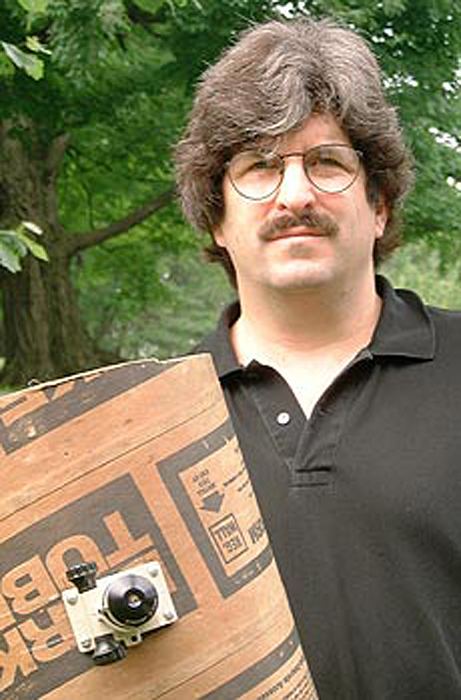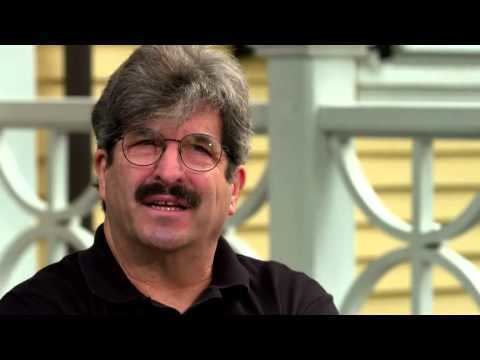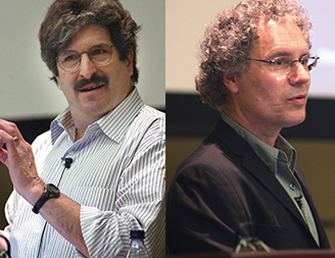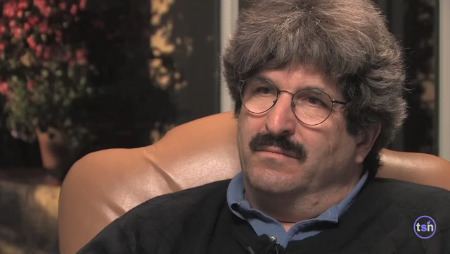Name Gary Ruvkun | Role Molecular Biologist | |
genetic and genomic analysis of c elegans longevity pathways prof gary ruvkun
Gary Bruce Ruvkun (born 26 March 1952, Berkeley, California) is an American molecular biologist at Massachusetts General Hospital and professor of genetics at Harvard Medical School in Boston. Ruvkun discovered the mechanism by which lin-4, the first microRNA (miRNA) discovered by Victor Ambros, regulates the translation of target messenger RNAs via imperfect base-pairing to those targets, and discovered the second miRNA, let-7, and that it is conserved across animal phylogeny, including in humans. These miRNA discoveries revealed a new world of RNA regulation at an unprecedented small size scale, and the mechanism of that regulation. Ruvkun also discovered many features of insulin-like signaling in the regulation of aging and metabolism.
Contents
- genetic and genomic analysis of c elegans longevity pathways prof gary ruvkun
- Gary ruvkun harvard the small rna revolution a perfect storm
- Education
- Research
- Awards
- References

Gary ruvkun harvard the small rna revolution a perfect storm
Education

Ruvkun obtained his undergraduate degree in 1973 at the University of California, Berkeley. His PhD work was done at Harvard University in the laboratory of Frederick M. Ausubel, where he investigated bacterial nitrogen fixation genes. Ruvkun completed post-doctoral studies with Robert Horvitz at the Massachusetts Institute of Technology (MIT) and Walter Gilbert of Harvard.
Research

Ruvkun's research revealed that the miRNA lin-4, a 22 nucleotide regulatory RNA discovered in 1992 by Victor Ambros' lab, regulates its target mRNA lin-14 by forming imperfect RNA duplexes to down-regulate translation. The first indication that the key regulatory element of the lin-14 gene recognized by the lin-4 gene product was in the lin-14 3’ untranslated region came from the analysis of lin-14 gain-of-function mutations which showed that they are deletions of conserved elements in the lin-14 3’ untranslated region. Deletion of these elements relieves the normal late stage-specific repression of LIN-14 protein production, and lin-4 is necessary for that repression by the normal lin-14 3' untranslated region. In a key breakthrough, the Ambros lab discovered that lin-4 encodes a very small RNA product, defining the 22 nucleotide miRNAs. When Ambros and Ruvkun compared the sequence of the lin-4 miRNA and the lin-14 3’ untranslated region, they discovered that the lin-4 RNA base pairs with conserved bulges and loops to the 3’ untranslated region of the lin-14 target mRNA, and that the lin-14 gain of function mutations delete these lin-4 complementary sites to relieve the normal repression of translation by lin-4. In addition, they showed that the lin-14 3' untranslated region could confer this lin-4-dependent translational repression on unrelated mRNAs by creating chimeric mRNAs that were lin-4-responsive. In 1993, Ruvkun reported in the journal Cell (journal) on the regulation of lin-14 by lin-4. In the same issue of Cell, Victor Ambros described the regulatory product of lin-4 as a small RNA These papers revealed a new world of RNA regulation at an unprecedented small size scale, and the mechanism of that regulation. Together, this research is now recognized as the first description of microRNAs and the mechanism by which partially base-paired miRNA::mRNA duplexes inhibit translation.
In 2000, the Ruvkun lab reported the identification of second C. elegans microRNA, let-7, which like the first microRNA regulates translation of the target gene, in this case lin-41, via imperfect base pairing to the 3’ untranslated region of that mRNA. This was an indication that miRNA regulation via 3’ UTR complementarity may be a common feature, and that there were likely to be more microRNAs. The generality of microRNA regulation to other animals was established by the Ruvkun lab later in 2000, when they reported that the sequence and regulation of the let-7 microRNA is conserved across animal phylogeny, including in humans. Presently thousands of miRNAs have been discovered, pointing to a world of gene regulation at this size regime.

When siRNAs of the same 21-22 nucleotide size as lin-4 and let-7 were discovered in 1999 by Hamilton and Baulcombe in plants, the fields of RNAi and miRNAs suddenly converged. It seemed likely that the similarly sized miRNAs and siRNAs would use similar mechanisms. In a collaborative effort, the Mello and Ruvkun labs showed that the first known components of RNA interference and their paralogs, Dicer and the PIWI proteins, are used by both miRNAs and siRNAs. Ruvkun's lab in 2003 identified many more miRNAs, identified miRNAs from mammalian neurons, and in 2007 discovered many new protein-cofactors for miRNA function.
Dr. Ruvkun's laboratory has also discovered that an insulin-like signaling pathway controls C. elegans metabolism and longevity. Klass Johnson and Kenyon showed that the developmental arrest program mediated by mutations in age-1 and daf-2 increase C. elegans longevity. The Ruvkun lab established that these genes constitute an insulin like receptor and a downstream phosphatidylinositol kinase that couple to the daf-16 gene product, a highly conserved Forkhead transcription factor. Homologues of these genes have now been implicated in regulation of human aging. These findings are also important for diabetes, since the mammalian orthologs of daf-16 (referred to as FOXO transcription factors) are also regulated by insulin. The Ruvkun lab has used full genome RNAi libraries to discover a comprehensive set of genes that regulate aging and metabolism. Many of these genes are broadly conserved in animal phylogeny and are likely to reveal the neuroendocrine system that assesses and regulates energy stores and assigns metabolic pathways based on that status. Recently, the Ruvkun lab discovered a deep connection between longevity and small RNA pathways, with the production of germline specific small RNA factors induced in somatic cells in long lived mutant animals.
The Ruvkun lab in collaboration with Maria Zuber at MIT and Michael Finney, George Church, Steve Quake, and Walter Gilbert is also developing protocols and instruments that use PCR primers corresponding to universal sequence elements of the 16S RNA gene to search for divergent microbes. One long-term goal of this project is to send a robotic thermal cycler with these primers to Mars in search of microbial life that is ancestrally related to life on Earth. Closer to home, these protocols may reveal microbes that may cause diseases unsuspected to be due to pathogens and microbes from extreme environments.
As of 2010, Ruvkun has published about 130 scientific articles. Ruvkun has received numerous awards for his contributions to medical science, particularly his study of microRNAs. He is a recipient of the Lasker Award for Basic Medical Research, the Gairdner Foundation International Award, and the Benjamin Franklin Medal in Life Science. Ruvkun was elected as a member of the National Academy of Sciences in 2008.
